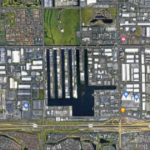Swiss Re AG said first-half net income rose more than ninefold to $1.4 billion from a year earlier, driven by contained natural catastrophe losses and a rebound in its life and health business to pre-pandemic levels.
Net premiums earned and fee income of $22.2 billion reflected increases in the price for policies the Swiss reinsurer provides as past disasters drive up demand for coverage, according to a company statement on Friday.
Profit for the second quarter was $804 million, while the return on the group’s investment portfolio was 2.8% for the first half of the year, compared with 1.2% a year earlier, driven by rising interest rates.
“In spite of macro-economic volatility, higher interest rates and steadily increasing recurring income contributed to an improved investment result,” Chief Financial Officer John Dacey said in a statement on Friday.
Catastrophe losses have been low in recent months for the industry but Swiss Re still faces the major test of the full US hurricane season until the end of November. That could yet pose a risk to its full-year profit target of more than $3 billion, which has already been jeopardized by its lackluster first quarter results. The firm said it is maintaining guidance for its full-year targets.
Swiss Re shares rose as much as 0.8% in Zurich and traded at 89.10 Swiss francs early Friday. The stock has risen by about 3% this year.
In its key property and casualty business, Swiss Re booked $634 million in large natural catastrophe losses in the first half from the earthquake in Turkey and Syria, Cyclone Gabrielle, and flooding in New Zealand. All are events that occurred in the first quarter.
Dacey said the firm is seeing some limited insured losses related to the summer heat waves in Europe and the US, which will be accounted for in the second-half results.
Swiss Re has been trimming its proportional reinsurance portfolio to reduce exposure to inflation risks and in the meantime increasing its natural-disaster reinsurance business as prices rise. At the same time it has also cut peak-catastrophe exposures. For example the risk from the Atlantic hurricane season, its largest such liability, fell by 11%, according to Charles Graham and Kevin Ryan, Bloomberg Intelligence’s senior analysts for insurance.
Many insurers are cutting ties with the business of providing coverage, particularly for homes, in regions highly prone to natural disasters as climate change makes seasonal weather more destructive and costly to insure.
Separately, Swiss Re is among other large insurers and reinsurers to abandon the world’s biggest climate coalition for the industry — the Net Zero Insurance Alliance — for fear of risks from anti-ESG rhetoric among U.S. politicians.
Earlier this year, Swiss Re proposed Jacques de Vaucleroy to serve as interim chairman until he can be formally voted on at the next shareholder meeting in April 2024. The change was prompted by the exit of Sergio Ermotti, who had been chairman since April 2021, returning as the chief executive officer at UBS Group AG.
More key numbers from Swiss Re’s half-year report:
- Group return on equity was 22.8%, vs 1.6% a year earlier
- Property and casualty business net income $904 million
- Life & Health net income $393 million
- Corporate solutions net income $323 million
- Swiss solvency ratio “well above” 200%-250% target range
Photograph: Swiss Re AG’s headquarters in Zurich. Photo credit: Philipp Schmidli/Bloomberg
Topics Catastrophe Profit Loss Swiss Re
Was this article valuable?
Here are more articles you may enjoy.



 Inflation, Catastrophe Losses Lead P&C Underwriting Loss in 2023
Inflation, Catastrophe Losses Lead P&C Underwriting Loss in 2023  Could Georgia Be Next With Major Tort Reform? Kemp Calls for Limits
Could Georgia Be Next With Major Tort Reform? Kemp Calls for Limits  Average Cost of a Data Breach Has Reached an All-Time High: IBM Report
Average Cost of a Data Breach Has Reached an All-Time High: IBM Report  Divers Find 32 Cars Submerged in Lake Near Miami
Divers Find 32 Cars Submerged in Lake Near Miami 

